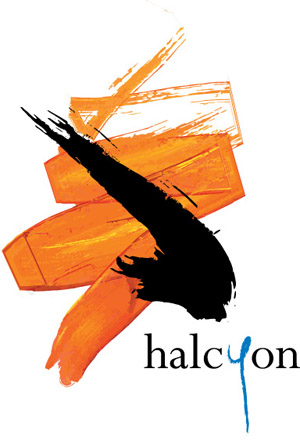Review by Shamistha de Soysa for Sounds Like Sydney, June 2019
Album Review: The Art Of Disappearing/ Halcyon/ Geist String Quartet/Kammerklang
Halcyon and the Geist String Quartet have joined forces to record a new album, The Art of Disappearing with hybrid art production company and record label, Kammerklang. The Art of Disappearing is a poignant new song cycle by Sydney composer, Cameron Lam, with words by Queensland writer Sarah Holland-Batt, from her first book, Aria. Lam composed The Art of Disappearing especially for Halcyon mezzo-soprano Jenny Duck-Chong, who performs it with the Sydney-based Geist String Quartet, comprising violinists Sonia Wilson and Mia Stanton, violist Hayasa Tanaka and cellist James Larsen. The eight songs in the cycle are themed around the unusual and challenging theme of grief, loss and memories – sentiments that might be repressed rather than confronted. Before a sense of despair sets in, it is important to note that Lam’s intention is to uplift and offer a release through music, saying “The cycle doesn’t present loss as something to solve; instead, it paints the inexorable journey from stasis, as we learn to move again.”
Interleaved amongst the eight songs are the four movements of Lam’s String Quartet No 2, Time Echoes Your Sounds. With this, he aims to “contemplate the nature of time,” reflecting the themes of grief and time.
Opening the anthology is the track from which the album takes its name, The Art of Disappearing, a touching duet for cello and voice written around an insistent ostinato phrase “will not hold” to which the voice returns throughout the song. Tracery uses a wide vibrato that moves through microtones, echoing glissandi and unconventional string sounds. Meditation on the Plums 1 is an onomatopoeic song with the word-painting accentuated by pizzicato playing from the strings. Its reprise, Meditation on the Plums 2, paints a different picture with the string playing arco.
Athenian Jar uses the spoken word, and Enduring Ritual introduces a darker undertone as Duck-Chong iterates in chest-voice, “My love is dead” before soaring into the higher registers of her voice. The album closes, coming full circle with The Art of Disappearing 2, which has a richer orchestration than the first version.
Each movement of Lam’s string quartet has a title – Synchronised Time, Scattered Like A Broken Crusader, Silence Resonating Into Sound and Which Was Always There. Synchronised Time is a busy imitative piece with lyrical lines superimposed on a syncopated accompaniment; Scattered Like A Broken Crusader thrums with the rhythm of a pulsating pizzicato that shatters legato; Silence Resonating Into Sound is the first we hear of darker undertones which continue in the rapid tremolo figures of Which Was Always There.
The soundscape is minimalist. Duck-Chong’s beautifully rounded voice is incisive yet gentle and she sings with impeccable diction. Amply suited to contemporary style, her voice joins the quartet as another instrument, straddling wild leaps in register and unerring in pitch.
The string quartet is put to good use. Lam exploits the range of the four instruments, their percussive potential and a variety of other techniques. The instrumentalists and the singer are in finely tuned sympathy with one another. Jenny Duck-Chong is an experienced exponent of new music. Along with her ensemble Halcyon, she has done an invaluable amount to build and perpetuate a canon of contemporary Australian song. The Art of Disappearing is yet another milestone in this litany of achievements.
© Shamistha de Soysa
This review appeared in SoundsLikeSydney

